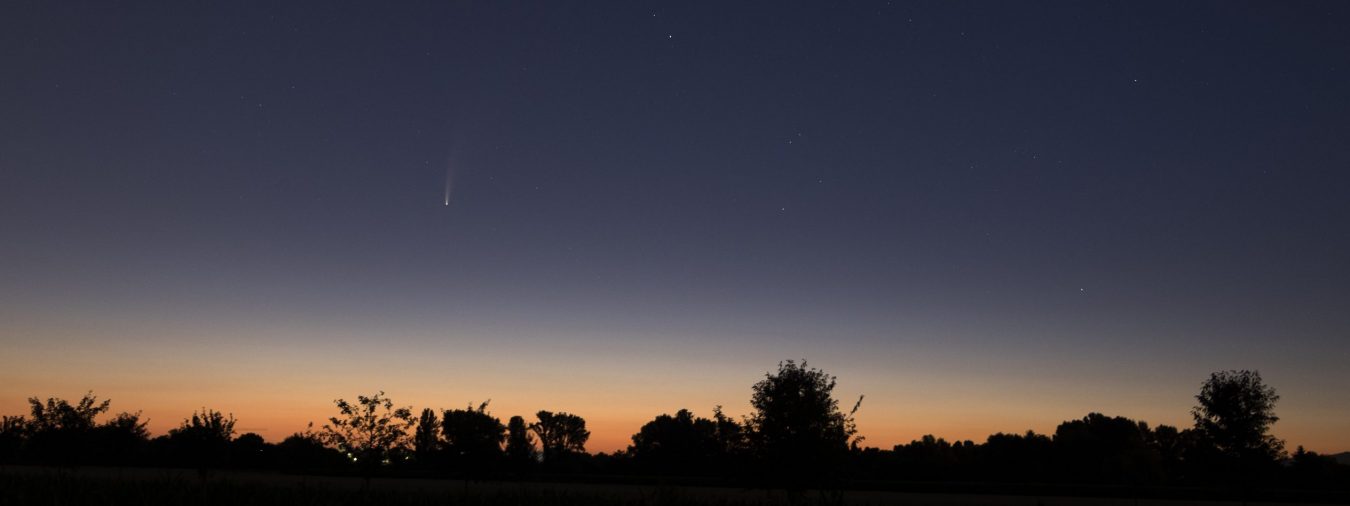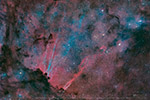The sky is full of beautiful phenomena, which are impressively displayed here with the Dolphin Head Nebula. This colossal gas bubble is the result of a catastrophic stellar wind emitted from one of the rarest and most unstable types of
Read more
Dolphin Head Nebula – SH2 308

LBN 878 and Barnard 35 in Orion

This beautiful combination of the dark cloud Barnard 35 and the brown and reddish glowing emission nebula LBN 878 framing it can be seen in the constellation Orion. Like other dark nebulae, Barnard 35 consists of interstellar gas and dust
Read moreVeil Nebula in Cygnus – NGC 6995, NGC 6920

This cirrus cloud-like nebula is the last visible remnant of a star that exploded in the Milky Way about 8,000 years ago. For people living at that time the expanding cloud was as bright as a crescent moon and visible
Read moreIC1613 – Dwarf Galaxy in Cetus

After upgrading our telescope in Namibia, we took an image of the fascinating dwarf galaxy IC1613 which was visible in the sky all night long. Located 2.3 million light-years away, it contains around 100 million stars and has an irregular
Read moreNGC6603 and the small Sagittarius Star Cloud M24

The center of our Milky Way is almost completely obscured from our view by interstellar dust and is therefore virtually invisible. But there is a small, tunnel-like window that allows us to see a particularly star-rich part of the Milky
Read moreM83 – Southern Pinwheel Galaxy

M83 is a gem in the southern night sky. Prominet spiral arms characterize this galaxy, the Southern Pinwheel Galaxy. Many reddish star-forming regions run along the edges of the thick dust lanes in its arms. They led to the further
Read moreA Cormorant in the Southern Celestial Serpent MW9

Like a cormorant on the hunt for prey is a part of this nebula shaped. In contrast to the typical gas nebulae in the plane of our Milky Way this type of nebula can be seen towards the north and
Read moreMy 3D-printed Mini-Observatory

It’s done! After four months of intensive construction, 3D printing, assembly and setup, my second 3D-printed and self-built mini observatory is finally finished. With a diameter of 80 cm, it is almost twice as high as my first mini observatory
Read moreM8 Lagoon Nebula

Like the famous Orion Nebula, the Lagoon Nebula is a predominantly red gas nebula in our Milky Way. It contains a large number of dark spots, so-called globules. These are star-forming regions of gas and very fine dust in which
Read moreNebulae in the Small Magellanic Cloud

A small, hazy spot can be seen in the southern night sky, the Small Magellanic Cloud. The name is misleading, however, because it is a dwarf galaxy. At least that was thought until the end of 2023. New observations now
Read more